#jacqueline couturier
Text

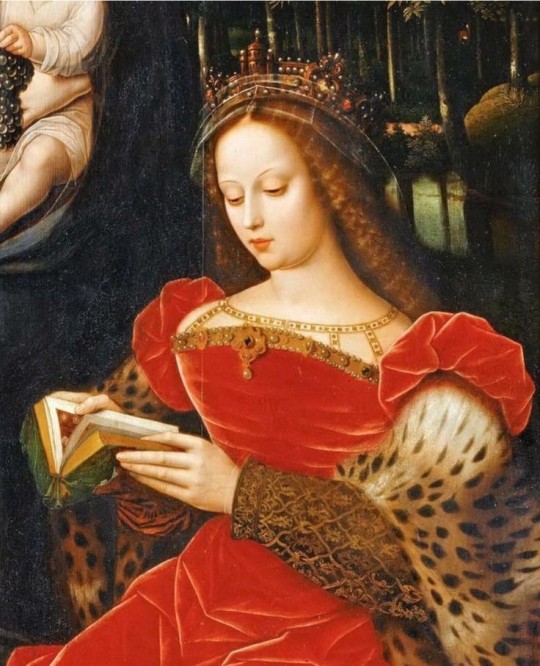

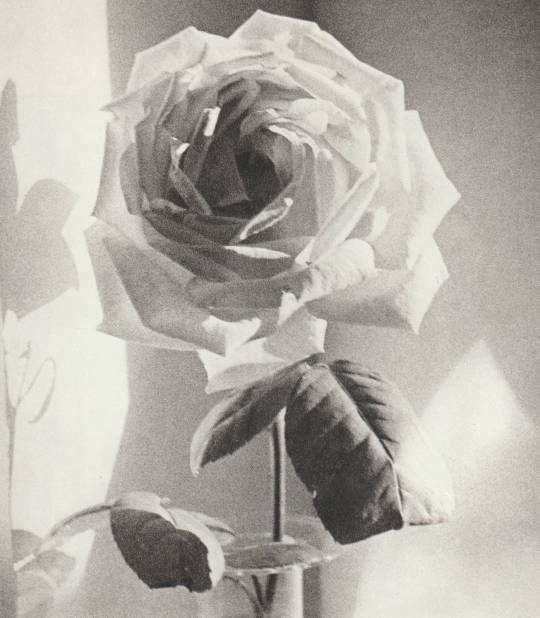

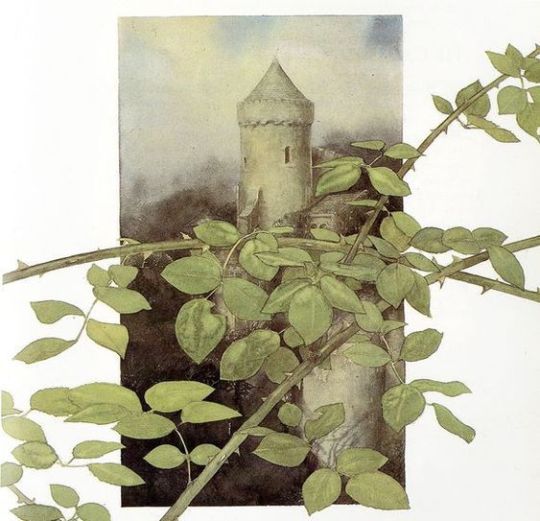
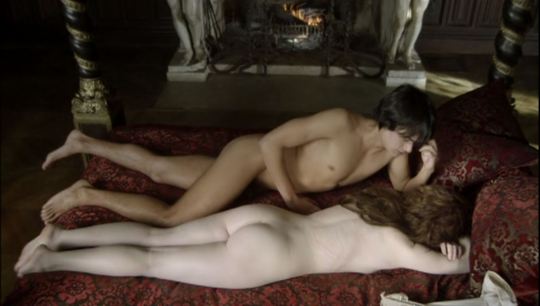
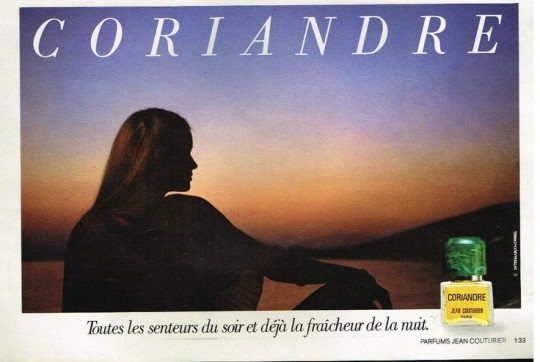
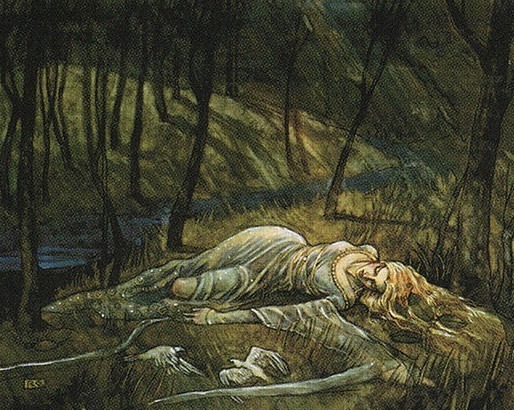
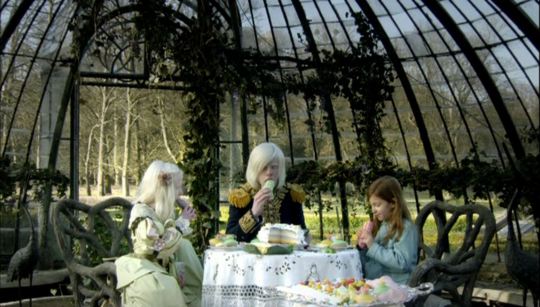
#jean couturier#coriandre#jean louis sieuzac#jacqueline couturier#gerard pelpel#sleeping beauty#walt disney#eric larson#wolfgang reitherman#clyde geronimi#les clark#la belle endormie#catherine breillat
14 notes
·
View notes
Text
#TwoForTuesday + #TextileTuesday :
Museum of Fine Arts, Boston display

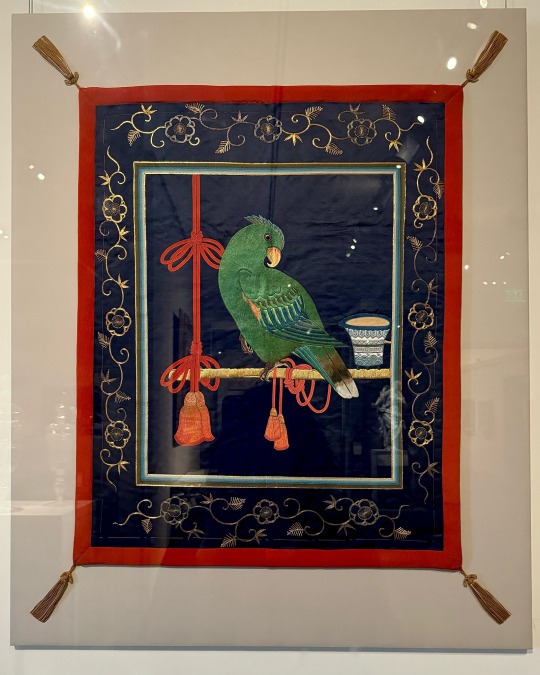

1 Gift cover (fukusa)
Japan, Meiji era, late 19th - early 20th c.
Silk satin embroidered w/silk & metallic threads
“For several centuries, silk covers or fukusa were draped over gifts to be presented on lacquer trays during weddings and other special ceremonies. The embroidered image of a parrot on a perch with feeder suspended by tasseled red cords on this fukusa was appropriate for an art form known for its depiction of the natural world. Lightly padded and backed with red crepe fabric brought to the front to frame the central image, it was designed to fall softly over a gift beneath with its gilt tassels slightly weighting each corner.”
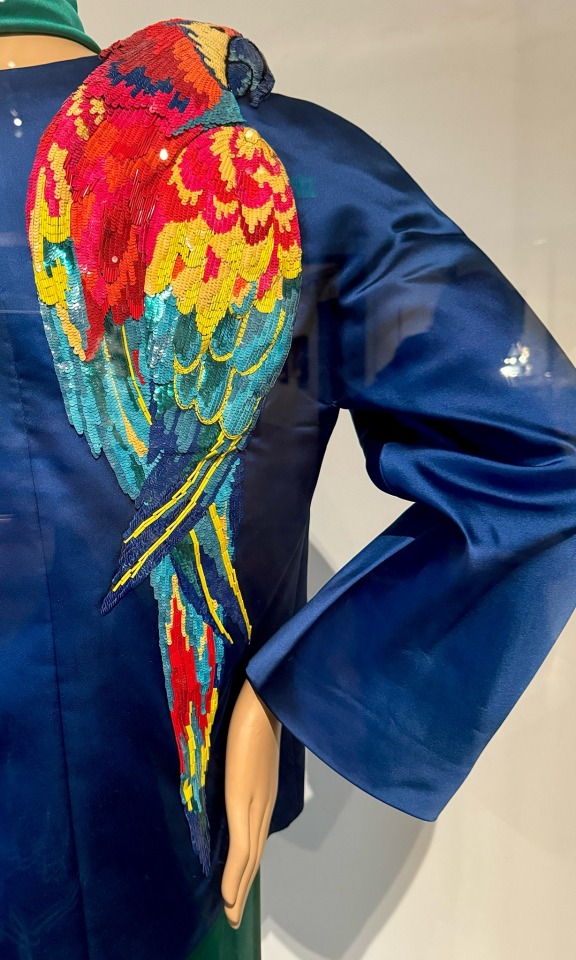

2 Oscar de la Renta (American, b. Dominican Republic, 1932-2014)
Woman's ensemble in 3 parts, 1980s
“Born Óscar Arístides Renta Fiallo in Santo Domingo, de la Renta was a renowned American couturier and ready-to-wear designer. Trained by the great Cristobal Balenciaga (1895-1972), he rose to international acclaim in the 1960s and dressed numerous American first ladies, from Jacqueline Kennedy to Michelle Obama. From power suits to couture gowns, de la Renta often used a variety of birds in his designs, as an intricate embroidery, a romantic textile design, or an oversized applique.
This ensemble was designed for the boldest of women and speaks to his passion for vibrant colors inspired by Spanish and Caribbean cultures and landscapes.”
#animals in art#20th century art#museum visit#bird#birds#parrot#parrots#macaw#Scarlet Macaw#fashion#American art#Japanese art#East Asian art#Asian art#19th century art#fukusa#Textile Tuesday#Two for Tuesday#Oscar de la Renta#1980s#Museum of Fine Arts Boston
17 notes
·
View notes
Text
THE SWINGING SIXTIES
The Defining Look of the Sixties






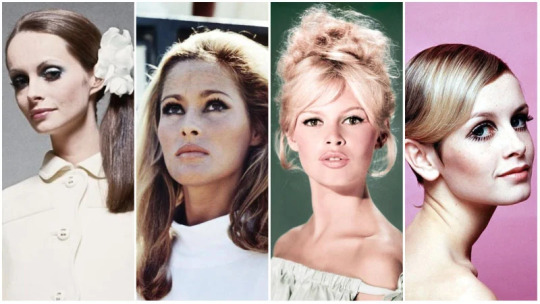

Taylah Brewer. (2022). 60S FASHION FOR WOMEN (HOW TO GET THE 1960S STYLE). [Online]. www.thetrendspotter.net. Last Updated: 7 August 2022. Available at: https://www.thetrendspotter.net/60s-fashion-for-women/#google_vignette [Accessed 4 January 2023]
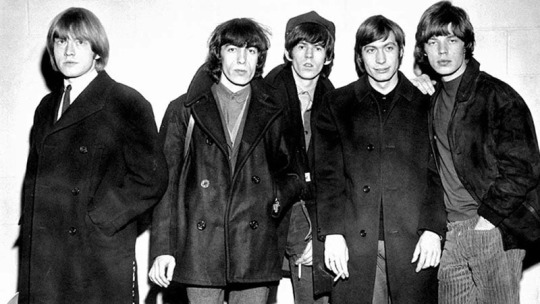
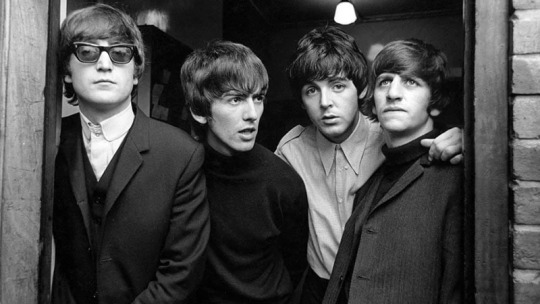
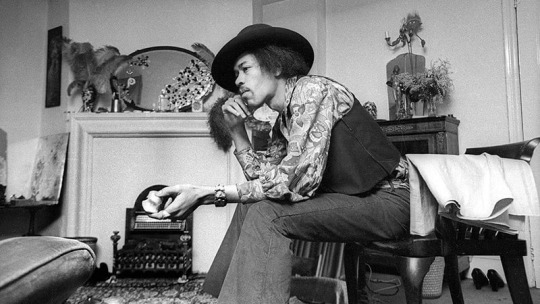
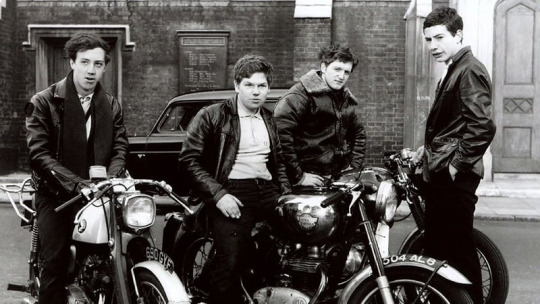

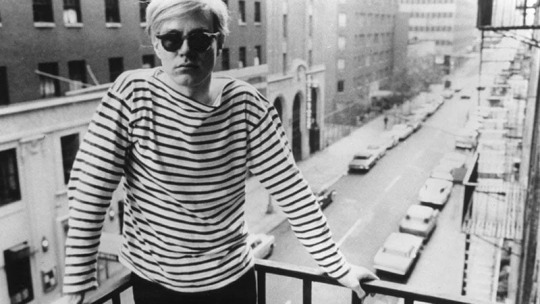
The Supremes
They were not only the most commercially successful female group of the '60s but among the top 5 pop/rock/soul acts of that decade. Diana Ross, Mary Wilson, and Florence Ballard had a mature, glamorous demeanor that appealed equally to teens and adults. Beautiful, musically versatile, and unique, the original Supremes were America's sweethearts.

Steven Ward. (2019). VINTAGE GOLD: AMERICA’S MOST SUCCESSFUL VOCAL GROUP IN THE SUPREMES. [Online]. www.grimygoods.com. Last Updated: 25 February 2019. Available at: https://www.grimygoods.com/2019/02/25/americas-most-successful-vocal-group-in-the-supremes/ [Accessed 3 january 2023].
Edie Sedgwick
The original 'it girl' inspired Bob Dylan and Andy Warhol, and was the toast of the New York art scene with her bouffant blonde hair, vintage chandelier earrings and by wearing nothing but a leotard and tights.
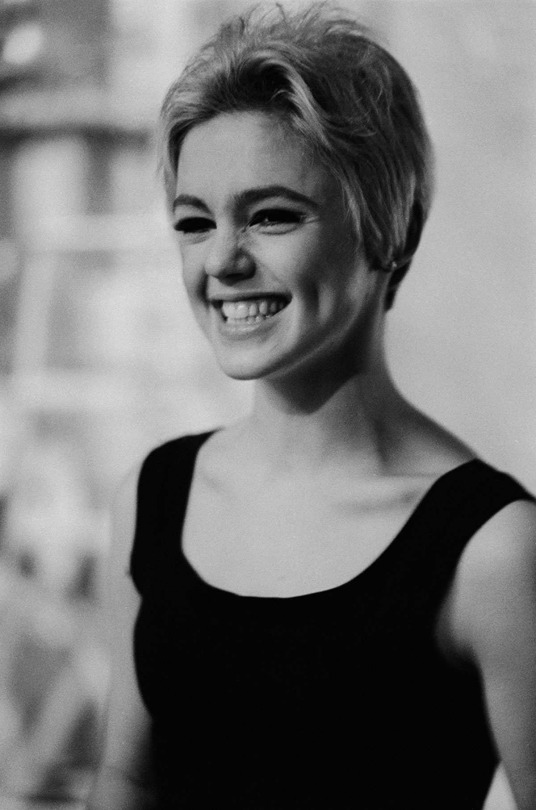
The Designers
London's fashion sector existed until the 1960s in the shadow of the renowned Parisian couturiers. Paris served as the centre of global fashion, specialising in tailored clothing for a fantastically wealthy, elite group of women. But all of a sudden, as the youth market expanded, London started to lead the pace.
Thanks to a handful of up-and-coming young designers trained in the couture tradition, Paris has maintained its edge. Fashion firms like Saint Laurent, Cardin, and Courrèges discovered how to appeal to younger customers. They established ready-to-wear shops and concessions in department stores and produced "space age" clothing that was quickly imitated on the high street.

The youth market was enormous in the US, and department stores made millions by importing London fashions. But retailers also recognised the boutique's potential. Local stores that catered to affluent customers by selling unique, cutting-edge designs thrived, notably in New York.
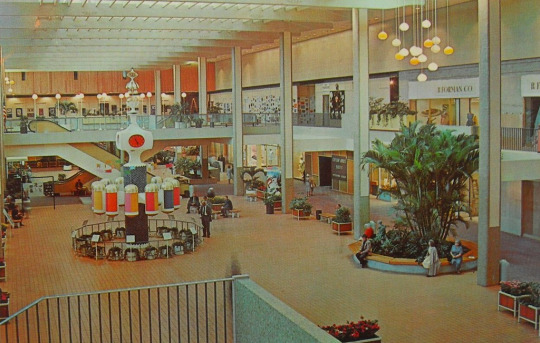
Andrè Courrèges
André Courrèges
The French designer is best known for introducing the revolutionary space look- featuring white boots, goggles and boxy dresses designed in futuristic metallic shades, high shine fabrics such as PVC. His look was a blend of avant-garde geometry with sports classic driven by the youth culture.
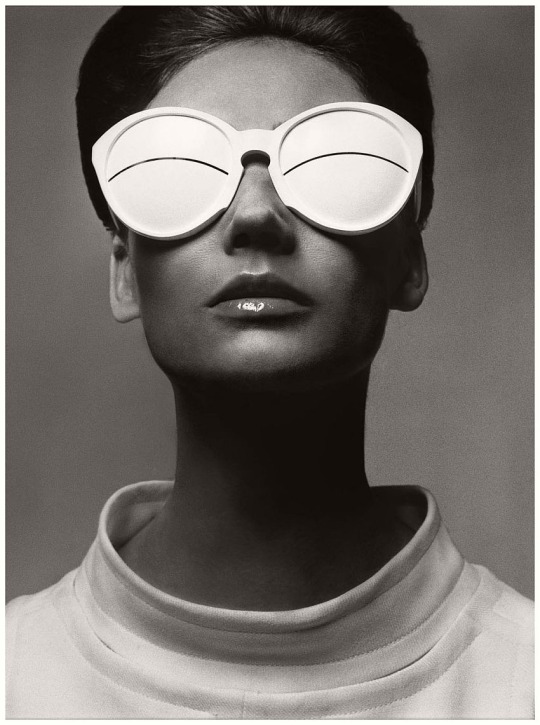
Pierre Cardin
Became famous for his brightly colored mini dresses. At the time his garments were "avant-garde" he like other designers at the time was heavily influenced by “Age" movement. His design style is mainly geometric shapes and colours.
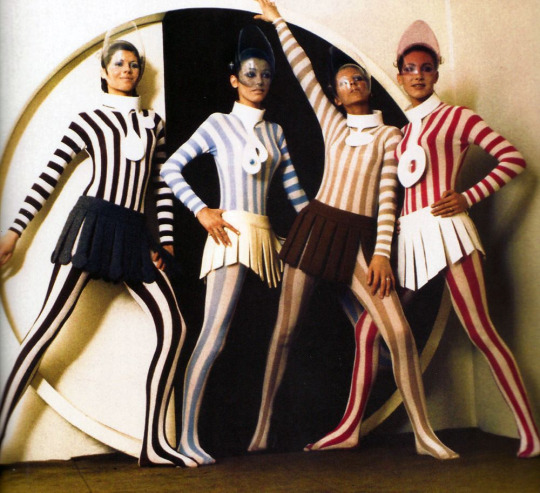
Paco Rabanne
The Spanish born designer made a name for himself in the 1960s with his space-age inspired fashions. He used materials such as metal, aluminum, plastic, plexi glass and even fiber optics. He was the first fashion designer to use black models in a catwalk show. As a result, he was almost thrown out of the Chambre Syndicale de la Couture Parisienne, the governing body of Parisienne fashion.

Givenchy
Responsible for the iconic little black dress that is essential to every woman's wardrobe and dressing the most elegant ladies of the time such as Audrey Hepburn, U.S. first lady Jacqueline Kennedy, Princess Grace of Monaco; Wallis Simpson, Duchess of Windsor and socialite Babe Paley.

Yves Saint Laurent
Shift dresses and pea coats became YSL trademark styles. In 1965, colour blocking made its entrance in the world of fashion, when Yves Saint-Laurent introduced the colour block dress, inspired by the works of the famous painter, Piet Mondria.

Emilio Pucci
Is best known for colorful psychedelic prints, especially for headscarves and dresses. In 1962 the world lost screen siren Marilyn Monroe. It's believed that she was buried in one of his dresses. Monroe was a huge fan of his work which can be clarified by the volume of Pucci garments in her personal collection displayed at Christies in 1999 prior to auction. Although an already established designer, Pucci saw an increase in sales in the sixties which he attributed to Miss Monroe and her popularity.
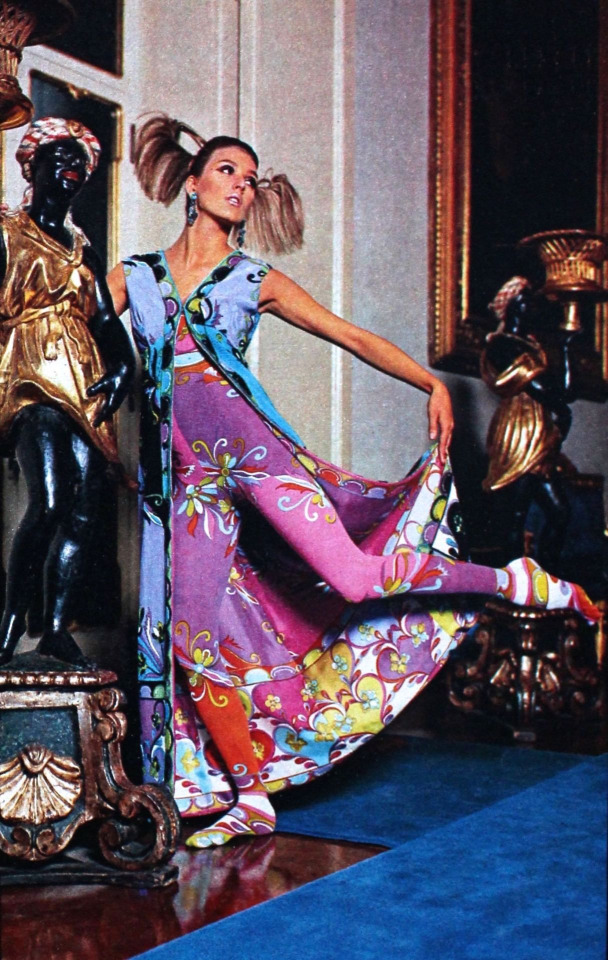
The Birth of the Hippie
(1960-70s)
Originally used to designate beatniks who had settled in San Francisco's Haight-Ashbury neighbourhood, the word hipple is derived from the hipster. The hippies sought for alternate lifestyles. The majority of hippies cherished independence, nature, closeness, peace, generosity, and spirituality.
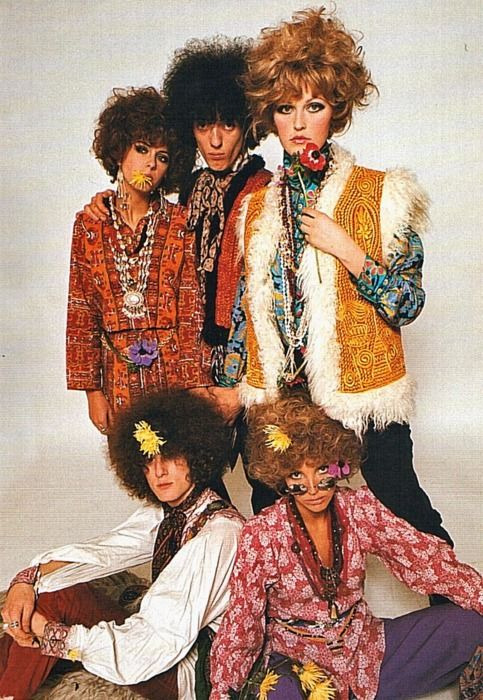
Nudity was another expression of freedom that hippies used to set themselves apart from society's norms. They frequently stayed in parks or set up camp in the woods, discarding their belongings.


All throughout, people wore tight-fitting bell-bottom jeans, preferably with flower patches and ankle fringe, T-shirts, or just a skimpy halter top. All of the peasant blouses complemented jeans. Anything handcrafted was considered an accessory, and many of them had peace symbols. Popular shirts and dresses had floral prints that stood for peace and love.
In general, people dressed in a way that they believed represented who they were as individuals and not only to follow the rules of fashion. For instance, both sexes wore their hair longer and it had an unruly, uncared-for appearance. This was in response to the mid-60s girl in the miniskirt who had neat, short hair.

Woodstock 1969
At Woodstock over 250,000 hippies showed up to hear artists like Janis Joplin, The Who, Canned Heat, The Allman Brothers, and County Joe and the Fish. Woodstock was not just a music concert. It was a "profound religious experience."

vintag.es. (2015). 40 Rare and Incredible Color Photographs That Capture Scenes of the Woodstock Music & Art Fair in August 1969. [Online]. www.vintag.es. Last Updated: 7 February 2015. Available at: https://www.vintag.es/2015/02/40-rare-and-unseen-color-photos-of.html [Accessed 3 january 2023].
The controversy of drugs
The most popular music of the time was psychedelic rock. Many of concerts were places for lippies to protest, socialise, dance, or take drugs. Drugs like marijuana and LSD were a big art of the hippy/counterculture movement. Using drugs made hippies feel like the were belling from mainstream society.
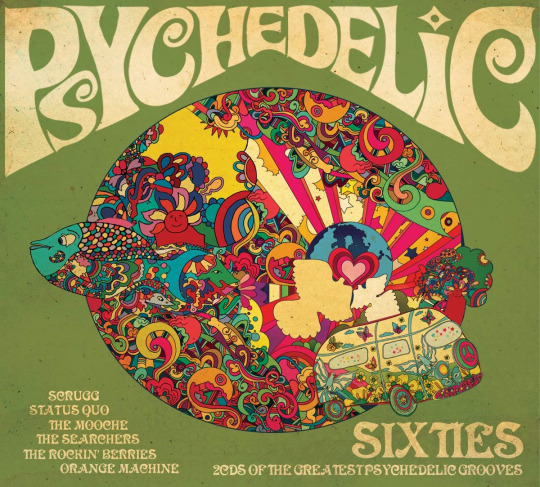
24 notes
·
View notes
Text
Celebrating the Timeless Elegance of Women's Clothing: A Journey Through Style and Empowerment
In the ever-evolving landscape of fashion, women's clothing stands as a testament to the artistry, diversity, and empowerment of feminine expression. From the flowing gowns of ancient civilizations to the tailored suits of modern professionals, women's attire has undergone a fascinating evolution, reflecting societal shifts, cultural influences, and individual identities. In this exploration, we delve into the multifaceted world of women's clothing, celebrating its rich history, timeless elegance, and enduring significance.
Throughout history, women's dresses has served as a canvas for self-expression, cultural heritage, and social status. In ancient civilizations such as Egypt, Mesopotamia, and Greece, intricate robes, tunics, and drapes were adorned with symbolic motifs, reflecting religious beliefs, social hierarchy, and artistic sensibilities. These garments not only provided practical protection but also conveyed a sense of identity and belonging within their respective societies.
As civilizations flourished and trade routes expanded, fashion became a means of cross-cultural exchange, with styles and fabrics traveling far and wide. The Silk Road, for instance, facilitated the spread of luxurious silk fabrics from China to the West, shaping the tastes and trends of aristocrats and commoners alike. Women's clothing became imbued with a sense of luxury, refinement, and sophistication, as sumptuous fabrics, intricate embroidery, and elaborate designs became synonymous with wealth and status.
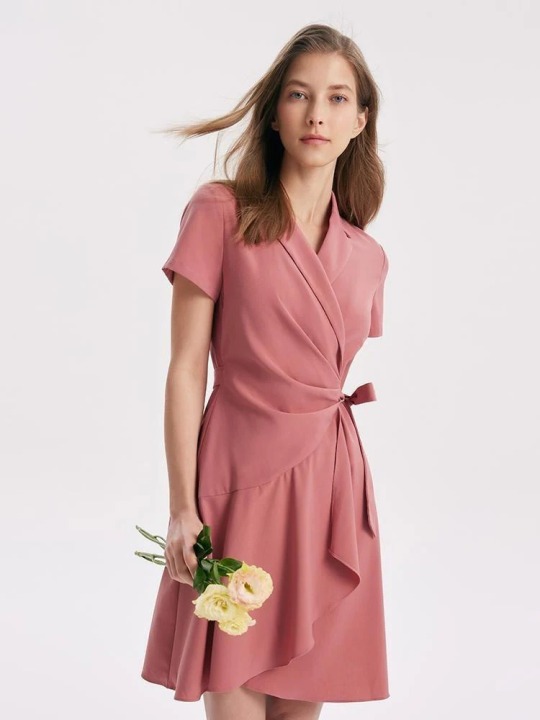
The Renaissance era witnessed a resurgence of artistic expression and individualism, reflected in the opulent gowns, corsets, and ruffs favored by noblewomen and royalty. Fashion became a form of artistic expression, with each garment meticulously crafted to accentuate the wearer's beauty and grace. The emergence of fashion plates and couturiers further fueled the desire for sartorial excellence, with women eagerly embracing new trends and styles to assert their status and identity.
The Industrial Revolution brought about profound changes in women's clothing, as mass production techniques and mechanized sewing machines revolutionized the fashion industry. Ready-to-wear clothing became increasingly accessible, allowing women of all backgrounds to express themselves through fashion. The rise of department stores and fashion magazines further democratized style, offering women a plethora of choices and inspirations to suit their tastes and lifestyles.
The 20th century witnessed seismic shifts in women's fashion, as changing social norms, technological advancements, and cultural movements reshaped the sartorial landscape. The flapper dresses of the Roaring Twenties embodied the spirit of liberation and rebellion, with their dropped waistlines and daring hemlines challenging traditional notions of femininity. The glamorous Hollywood starlets of the Golden Age exuded sophistication and allure, inspiring women around the world with their impeccable style and glamour.
The post-war era saw a return to elegance and refinement, with Christian Dior's New Look revolutionizing women's fashion with its cinched waists and full skirts. Subsequent decades witnessed the emergence of iconic fashion icons such as Audrey Hepburn, Jacqueline Kennedy Onassis, and Madonna, whose signature styles continue to influence and inspire women to this day.
In the 21st century, women's clothing continues to evolve, reflecting the diverse lifestyles, values, and identities of contemporary women. From athleisure wear that seamlessly blends style and functionality to sustainable fashion initiatives that prioritize ethical production and environmental conservation, the possibilities are endless. Women are embracing their individuality and celebrating their bodies, rejecting restrictive norms and embracing inclusive and diverse representations in fashion.
In conclusion, women's clothing is not merely about fabric and stitching; it is a powerful form of self-expression, empowerment, and cultural identity. Across centuries and continents, women have used clothing as a means of asserting their individuality, challenging conventions, and celebrating their inherent beauty and strength. As we continue to navigate the ever-changing landscape of fashion, let us celebrate the timeless elegance and enduring significance of women's clothing, honoring its rich history and embracing its limitless potential for creativity and self-expression.
1 note
·
View note
Text
0 notes
Photo






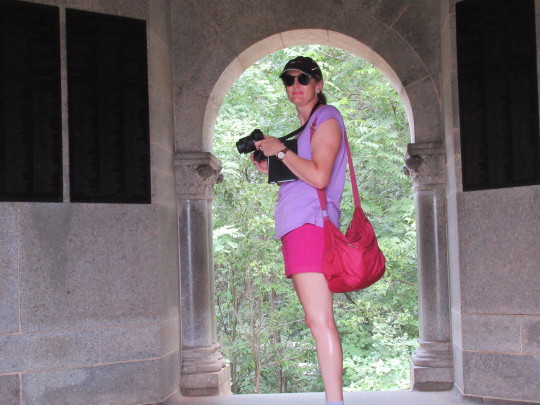



National Pink Day
Some may say that pink is for girls and blue is for boys, but both the history of the color pink and how it is perceived today are much more complex and varied than that. Pink, which is celebrated today, is a pale color that falls somewhere between red and bluish-red, usually somewhere between red and magenta. Some shades, like the color salmon, are even orangish. The color was referenced in literature in ancient times, but its name dates to the seventeenth century when it was named for a flower that has the name.
The perception of pink in society has changed over the years. It has long been associated with femininity, and at times has been considered kitsch, erotic, sophisticated, or transgressive. It has also been associated with sweetness, tenderness, charm, sensitivity, childhood, and romance. When paired with white it has signified chastity and innocence, and when coupled with black it has conveyed eroticism and seduction.
During the Middle Ages, pink was used primarily in women’s fashion and in religious art, while during the Renaissance, it was used mainly for flesh color in paintings. Its rise in popularity in the West took place in the mid-eighteenth century. During that time, men and women wore faint, powdery pieces of pink clothing as a status symbol of luxury and class. Both male and female infants and children were dressed in the color—it was often more associated with males because it was seen as a lighter shade of red, which was a color viewed as masculine. Boys continued to wear pink well into the nineteenth century, including pink ribbons and decorations. Eighteenth-century paintings gave contrasting meanings of pink. Some depicted the color as being associated with childhood, innocence, or tenderness, while others showed it as a color of seduction.
In the mid-nineteenth century, pink shifted away from masculinity and was viewed as being delicate. One reason for this was that men started wearing darker colors, and women consequently began wearing and being associated with brighter, pastel colors. Eroticism began being associated with pink during this century as well because the color had a quality similar to nakedness. Lingerie began appearing in pink, and art and literature began referencing the color’s sexual quality, particularly the color’s relation to the female body.
The color had long been related to the higher classes of society, but during the twentieth century, there was a status shift that moved it from luxury to the working-class. This was on account of the proliferation of cheap dyes that allowed the creation of garish takes on the color. The hues became brighter and bolder, and the dyes didn’t easily fade. It was at this time pink entered what is viewed as the vulgar, being associated with prostitutes. But the connotation of luxury was not fully removed from the color. For example, during the first decades of the century, Paul Poiret, a French couturier, made exquisite dresses in shades of pink.
In the 1950s, the color became strongly associated with femininity, largely on account of Postwar branding and marketing. This is the era when pink became associated with girls and blue became associated with boys. A few happenings during the decade helped to push pink further into this direction. Mamie Eisenhower, the wife of President Dwight D. Eisenhower, wore a pink dress for her inaugural gown in 1953, and Audrey Hepburn’s 1957 film Funny Face featured many women wearing pink dresses. The color was often still seen as being frivolous at the time, which reflected a less-than-equal view of women that persisted during these pre-women’s liberation years.
When Jacqueline Kennedy and Marilyn Monroe began wearing it in the early 1960s, it once again was viewed as being luxurious. It was adopted by punk, pop, and hip-hop culture in the following decades. Pink triangles became a symbol of gay activism in the 1970s when they were claimed by gay activists and removed from their dreadful past when they were used by Nazis to identify homosexuals in concentration camps. In general, the color pink is now associated with the LGBTQ community.
In recent years, the color has also been used by women in the West as a symbol of feminist power and protest, where sexual, reproductive, and social rights are addressed. Pink pussyhats were worn at the 2017 Women’s March in Washington, D.C., on the day after the inauguration of President Donald Trump. Similarly, Code Pink is a women’s activist group that opposes war and globalization. The pink of the twenty-first century is both pretty and powerful, both feminine and feminist. Men in the West have even been embracing the color more in recent years. Still, the color is generally more accepted n the East. For example, in India, pink clothes, adornments, and turbans are commonly worn by both sexes.
The color is associated with Breast Cancer Awareness Month, during which Metastatic Breast Cancer Awareness Day takes place. A pink ribbon is the symbol of breast cancer awareness. Other holidays such as Pink Cadillac Day and Pink Flamingo Day—which happens to take place today—celebrate with the color.
Pink can be seen almost everywhere you look. It is used in idioms and phrases such as “give a pink slip” and “tickled pink”; flowers bloom bearing its color; many foods and drinks sparkle with it; clothes and makeup are shaded with its hue; and even the rising and setting of the sun greet us and wave to us with shades of pink. No matter where pink is found, we celebrate it today!
How to Observe
Here are some ideas on how to spend the day:
Wear some pink clothes, a pink hat, or some pink shoes.
Buy something that is pink.
Wear pink lipstick or blush, or dye your hair pink.
Eat some pink colored food, such as watermelon, peeps, rhubarb, salmon, shrimp, grapefruit, ham, or cotton candy.
Drink some pink colored beverages such as a strawberry shake or pink lemonade. Some cocktail options include the Pink Lady and the Pink Squirrel.
Listen to a song or watch a film with “pink” in the title.
Celebrate Pink Flamingo Day, which also takes place today.
Have a party and incorporate as many pink things as possible, including pink decorations, food, and clothes.
Plant, pick, or buy some pink flowers, such as roses, hibiscuses, tulips, peonies, or hyacinths.
Look for a pinkish light from the sun early in the morning or in the evening before it goes down.
Read a book about the color pink, such as Pink: The History of a Punk, Pretty, Powerful Color by Valerie Steele.
Source
#usually I don't wear pink#Sweden#Gettysburg National Military Park#travel#Four Corners Monument#Mesa Verde National Park#original photography#rose#flower#blooming#flora#nature#Oleander#fireweed#USA#summer 2022#2020#2019#Hall Winery#Beringer Vineyards#Cline Family Cellars#Brix Restaurant & Gardens#National Pink Day#23 June#NationalPinkDay#not my color#landscape#cityscape#tourist attraction
0 notes
Text
Premios ⬤ 22

Película
AFTERSUN
Runner-Up: Nope
Director
Charlotte Wells | AFTERSUN
Runner-Up: Jordan Peele | Nope
Actriz
Renate Reinsve | VERDENS VERSTE MENNESKE
Runner-Up: Frankie Corio | Aftersun
Actor
Paul Mescal | AFTERSUN
Runner-Up: Ben Whishaw | Surge
Actriz de Reparto
Stephanie Hsu | EVERYTHING EVERYWHERE ALL AT ONCE
Runner-Up: Ximena Lamadrid | Bardo, falsa crónica de unas cuantas verdades
Actor de Reparto
Anders Danielsen Lie | VERDENS VERSTE MENNESKE
Runner-Up: Ke Huy Quan | Everything Everywhere All At Once
Guión Original
Jordan Peele | NOPE
Runner-Up: Charlotte Wells | Aftersun
Guión Adaptado
Joel Kim Booster | FIRE ISLAND
Runner-Up: Peter Craig, Matt Reeves | The Batman
Edición
Blair McClendon | AFTERSUN
Runner-Up: Nicholas Monsour | Nope
Fotografía
Darius Khondji | BARDO, FALSA CRÓNICA DE UNAS CUANTAS VERDADES
Runner-Up: Hoyte Van Hoytema | Nope
Diseño de Producción
Ruth De Jong, Samantha Englender, Leandre Lagrange | NOPE
Runner-Up: Eugenio Caballero, Roberto Bonelli, Carlos Y. Jacques | Bardo, falsa crónica de unas cuantas verdades
Diseño de Vestuario
Ruth E. Carter | BLACK PANTHER: WAKANDA FOREVER
Runner-Up: Jacqueline Durran | Spencer
Make-Up & Hairstyling
Camille Friend, Joel Harlow | BLACK PANTHER: WAKANDA FOREVER
Runner-Up: Adam Johansen, Matteo Silvi | Thor: Love and Thunder
Efectos Visuales / Especiales
Scott R. Fisher, Jeremy Robert, Guillaume Rocheron, Sreejith Venugopalan | NOPE
Runner-Up: Guillaume Rocheron, Olaf Wendt | Bardo, falsa crónica de unas cuantas verdades
Edición de Sonido
Nicolas Becker, Martín Hernández | BARDO, FALSA CRÓNICA DE UNAS CUANTAS VERDADES
Runner-Up: Johnnie Burn | Nope
Mezcla de Sonido
José Antonio García | NOPE
Runner-Up: Santiago Núñez, Frank A. Montaño, Jon Taylor, Ken Yasumoto | Bardo, falsa crónica de unas cuantas verdades
Score
Jonny Greenwood | SPENCER
Runner-Up: Michael Abels | Nope
Soundtrack
AFTERSUN
Runner-Up: Black Panther: Wakanda Forever
Canción
“This Is A Life” — Son Lux, Mitski, David Byrne | EVERYTHING EVERYWHERE ALL AT ONCE
Runner-Up: “Con la Brisa” — Foudeqush, Ludwin Göransson | Black Panther: Wakanda Forever
Diseño de Créditos
Aaron Becker | NOPE
Runner-Up: Duncan Elms | The Batman
Trailer
Marvel Enterteinment | BLACK PANTHER: WAKANDA FOREVER
Runner-Up: Strand Releasing | Mogul Mowgli
Poster
LA | NOPE
Runner-Up: P+A | Aftersun
Poster en Cortometraje
BIEN PARECIDAS
Runner-Up: Cruise
Actuación en Cortometraje
Anna Dzieduszycka | SUKIENKA
Runner-Up: Joanie Martel | Lune
Realización en Cortometraje
Emita Frigato, Rachele Meliadò | Diseño de Producción | LE PUPILLE
Runner-Up: Nadège Feyrit | Diseño de Sonido | La Neige Incertaine
Guión en Cortometraje
Marion Boisrond, Ada Hernaez, Marie-Liesse Coumau, Gwendoline Legendre, Romane Tisseau | LA NEIGE INCERTAINE
Runner-Up: Oscar Sarmiento Schultz | Parece que va a nevar
Dirección en Cortometraje
Daniel Soares | O QUE RESTA
Runner-Up: Alice Rohrwacher | Le Pupille
Cortometraje de Ficción
O QUE RESTA
Runner-Up: Ala Kachuu
Cortometraje Documental
ACUEDUCTOS
Runner-Up: Fuego en el cielo
Cortometraje Animado
LA NEIGE INCERTAINE
Runner-Up: Last Summer
Película Animada
TURNING RED
Runner-Up: Flugt
Off-Screen Performance
Chris Evans | LIGHTYEAR
Runner-Up: Rosalie Chiang | Turning Red
Non-Anglo Performance
Renate Reinsve | VERDENS VERSTE MENNESKE
Runner-Up: Anders Danielsen Lie | Verdens Verste Menneske
Performance Mexicano
Daniel Giménez Cacho | BARDO, FALSA CRÓNICA DE UNAS CUANTAS VERDADES
Runner-Up: Karla Souza | La Caída
Featured Actor
Luis Couturier | BARDO, FALSA CRÓNICA DE UNAS CUANTAS VERDADES
Runner-Up: Scoot McNairy | C’mon C’mon
Stunts / Choreography
EVERYTHING EVERYWHERE ALL AT ONCE
Runner-Up: Prey
Breakthrough Actriz
Frankie Corio | AFTERSUN
Runner-Up: Stephanie Hsu | Everything Everywhere All At Once
Breakthrough Actor
Brandon Perea | NOPE
Runner-Up: Daryl McCormack | Good Luck to You, Leo Grande
Rising Filmmaker
Charlotte Wells | AFTERSUN
Runner-Up: Stephen Karam | The Humans
Ensamble
Daniel Kaluuya, Keke Palmer, Brandon Perea, Steven Yeun, Michael Wincott, Jacob Kim, Terry Notary, y Keith David | NOPE
Runner-Up: Michelle Yeoh, Ke Huy Quan, Stephanie Hsu, Jamie Lee Curtis, James Hong, Tallie Medel, Jenny Slate, y Harry Shum Jr. | Everything Everywhere All At Once
Escena
This is our last dance | AFTERSUN
Runner-Up: Jean Jacket | Nope
Wide Release
NOPE
Runner-Up: The Batman
Limited Release
AFTERSUN
Runner-Up: C’mon C’mon
Non-Theatrical Release
FIRE ISLAND
Runner-Up: Prey
Documental
FLUGT
Runner-Up: Ermitaños
Película Iberoamericana
MEMORIA
Runner-Up: Los Reyes del Mundo
Película Mexicana
BARDO, FALSA CRÓNICA DE UNAS CUANTAS VERDADES
Runner-Up: Nudo Mixteco
#Film#Awards#Aftersun#Nope#Bardo falsa crónica de unas cuantas verdades#Verdens Verste Menneske#Everything Everywhere All At Once#Black Panther: Wakanda Forever#Fire Island#Spencer#Turning Red#Lightyear#Flugt#Memoria#O22#MG#⬤#Personal#Own Awards
0 notes
Photo

Ann Lowe “I love my clothes, and I’m particular about who wears them. I am not interested in sewing for café society or social climbers. I do not cater to Mary and Sue. I sew for the families of the Social Register.” - Ann Lowe, ‘Ebony’ magazine, 1966. On a sunny September morning in 1953, outside ‘St. Mary’s Church’ in Newport, Rhode Island, a young woman then known as Jacqueline Bouvier emerged from her town car. She was to marry the recently elected junior senator for Massachusetts, John F. Kennedy. The next day, it wasn’t just the minting of a new political dynasty that made headlines, but the new Mrs. Kennedy’s exquisite white wedding dress. The fairy-tale gown captured the imagination of women the world over and sealed her nascent status as a fashion icon whose style would echo through generations. Missing from the day’s coverage, however, was the name of the designer. In press clippings from the time the maker was referred to only as a “coloured designer.” For any bride seeking to emulate the delicate romance of Kennedy’s gown - its elegant portrait neckline, its billowing silk taffeta skirt, its diaphanous lace veil - the trail went cold. It would take years before Ann Lowe, the Black designer behind the dress, would be fully and nationally recognised for her work. Despite the breathless coverage of the wedding down to every last detail only a single ‘Washington Post’ journalist at the time noted Lowe’s name. Lowe’s remarkable versatility as an artist and couturier would remain overlooked for decades. Lowe, who was born in rural Alabama in 1898, spent barely a few years in the state’s segregated schools before leaving to pursue dressmaking. (Her grandmother and mother were both seamstresses and taught her the trade.) At the age of 16, following her mother’s untimely death, Lowe took over the family business and spent a brief stint studying in New York, before first making her name as a designer to the great and good of Tampa. Still, she always had her sights set on New York as the city where her dreams of being one of her generation’s greatest designers would be realised. https://www.instagram.com/p/CdXpONtsj2u/?igshid=NGJjMDIxMWI=
1 note
·
View note
Photo
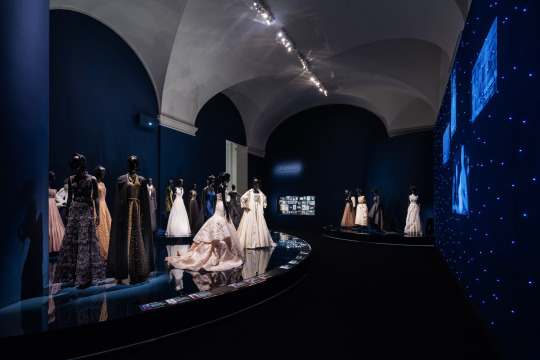


Since opening his fashion house, @dior was chosen as the couturier of choice for numerous Stars. Actresses like the Brooklyn-born Rita Hayworth thought him most able to best convey their Hollywood dreams. Other beautiful and glamorous stars, like Lauren Bacall, Josephine Baker, Ava Gardner, Sophia Loren, Marilyn Monroe, and Elizabeth Taylor, would wear Dior’s creations, both onscreen and off. More recently, stars such as Awkwafina, Lady Gaga, Nicole Kidman, Jennifer Lawrence, Lupita Nyong'o, Sarah Jessica Parker, Natalie Portman, Rihanna, and Charlize Theron appeared on the red carpet dressed in Dior. Dior's creations have been featured in more than one hundred films by directors including Pedro Almodóvar, Luis Buñuel, Charlie Chaplin, Costa-Gavras, Vittorio de Sica, Stanley Donen, Jean-Luc Godard, Alfred Hitchcock, Claude Lelouch, and François Truffaut. Princesses and first ladies have also often chosen to wear Dior to make an unforgettable appearance, starting in the early years with the Duchess of Windsor and Princess Grace of Monaco as well as Jacqueline Kennedy and Princess Margaret. In December 1996, Diana, Princess of Wales, wore John Galliano's first creation for Dior, a navy-blue slip dress, and carried the Lady Dior handbag to the Costume Institute Gala celebrating the Christian Dior exhibition at the Metropolitan Museum of Art.
In #DiorDesignerOfDreams you can see all of these celebrity Dior’s designs in one room through February 20th.
30 notes
·
View notes
Photo

Nous inaugurons, avec Alexis de Redé, une série de portraits d'élégants que vous retrouverez tous les 10 jours ( chaque 1er , 10, et 20 ème jour du mois) sur notre Instagram. . Alexis von Rosenberg, baron de Redé, d'origine austro-hongroise (mais qui se souvient encore de l'empire austro-hongrois?) fait son entrée dans le monde à 24 ans et devient l'une des coqueluches du Tout-Paris. Beau, pas encore redevenu riche, élégant, courtois, raffiné, timide et très secret "Il portait avec élégance sa jolie tête de mort" écrira Louise de Vilmorin. Très vite il emménage dans un des plus beaux endroits de Paris, l'hôtel Lambert sur l'Isle Saint Louis, construit par Le Vau et va y donner les plus belles fêtes de l’époque ! Le 23 juin 1957, il donne le somptueux "Bal des Têtes" organisé avec l'aide du tout jeune Yves Mathieu Saint Laurent, pas encore couturier star. Chaque invité doit arborer pour l'occasion, une superbe tête. La plus belle sera récompensée par un jury composé du duc de Windsor, de Charles de Beistegui , d'Elsa Maxwell et du baron lui-même. Pour son "Bal oriental", en 1969 il fait construire deux éléphants grandeur nature en papier mâché postés dans la cour de l’hôtel Lambert. Plusieurs «beaux garçons» recrutés pour l’occasion sont grimés en esclaves nubiens. On y croise Brigitte Bardot en mini bikini argent, Dali accompagné d'Amanda Lear, Jacqueline de Ribes, Maria Callas, les Rothschild, Serge Lifar, la princesse Margrethe de Danemark et le prince Henrik, Audrey Hepburn et sa tête cage... Cette petite sauterie lui coûtera un million de dollars. Une autre époque! « Je n’aime pas les hommes dont les chaussettes sont si courtes qu’elles laissent voir la peau" dira ce Grand amateur de souliers. Anthony Cleverley son chausseur attitré, donne d'ailleurs son nom à une paire de mocassin , toujours en vente ! Et une boulangerie de l’île Saint-Louis fabrique encore un petit pain Redé : où va se nicher la célébrité tout de même!
. Merci @ze_french_do_it_better pour son aide précieuse.
#baronderédé #daniellevychemisier #ghislainedepolignac #jeancocteau #frenchelegance #parischic #savoirfaire #surmesure #faitenfrance #3rueducirque (à Daniel Lévy) https://www.instagram.com/p/CN5LtKurz1Y/?igshid=eeds23fuour9
#baronderédé#daniellevychemisier#ghislainedepolignac#jeancocteau#frenchelegance#parischic#savoirfaire#surmesure#faitenfrance#3rueducirque
1 note
·
View note
Text
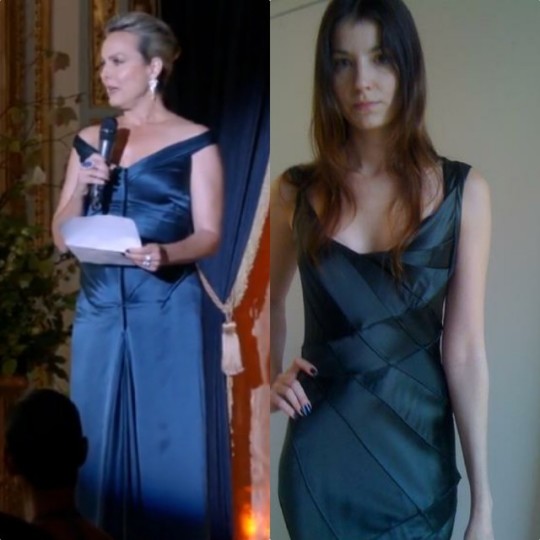
Who: Melora Hardin as Jacqueline Carlyle
What: Robert Danes Couture (Bought on Bergdorf Goodman)
When: The Bold Type| 03X04 "The Deep End"
FYI: Jacqueline's dress was made for her so the dress does not exist. This couturier doesnt almost exists online so if you want one of His gowns You'll have to Go to Bergdorf Goodman
7 notes
·
View notes
Text
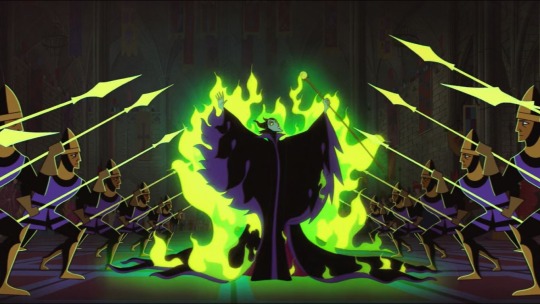


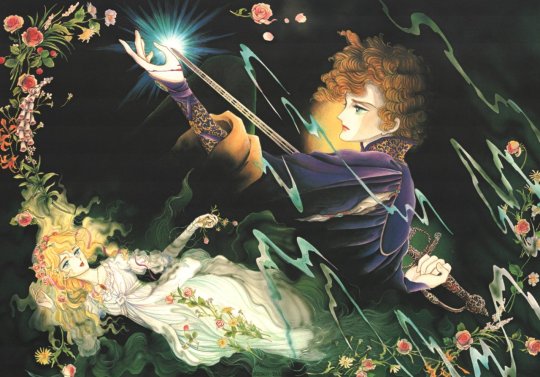
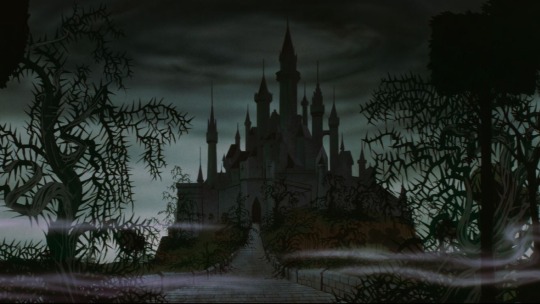
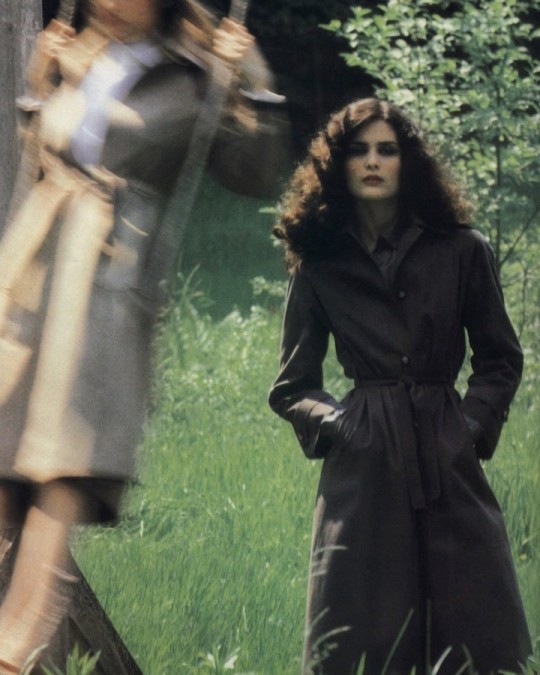
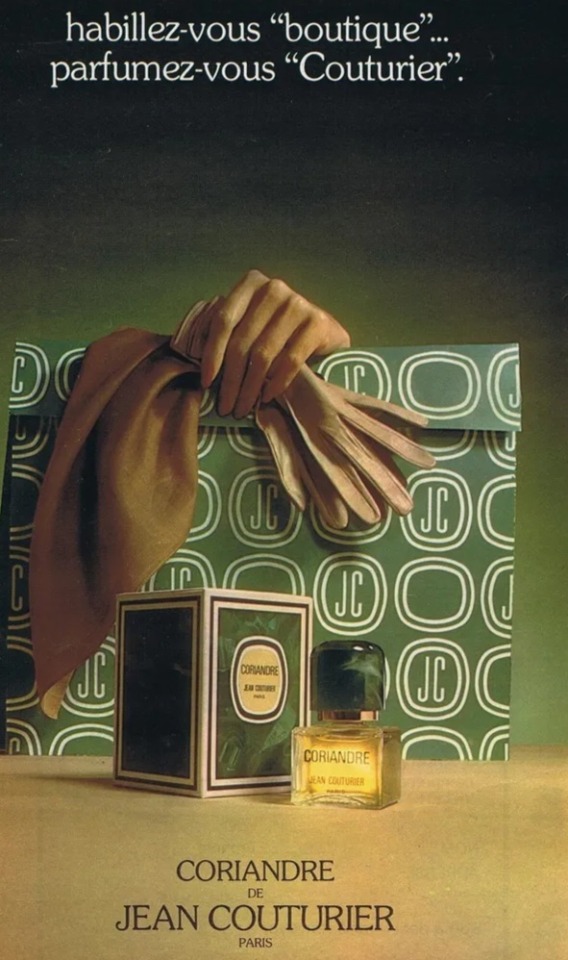
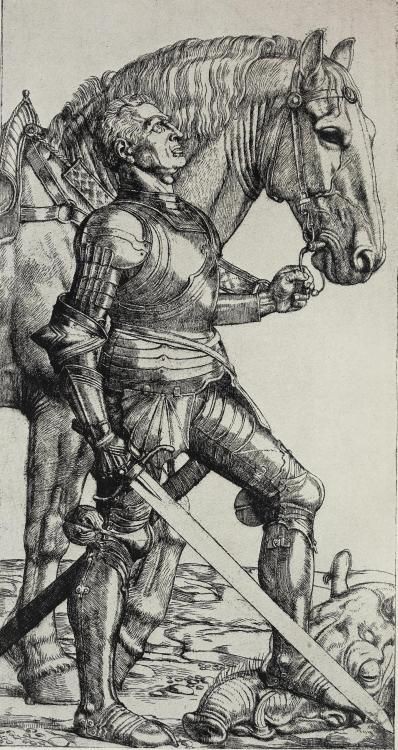

#jean couturier#coriandre#jean louis sieuzac#jacqueline couturier#gerard pelpel#sleeping beauty#walt disney#eric larson#wolfgang reitherman#clyde geronimi#la belle endormie#catherine breillat#les clark
6 notes
·
View notes
Photo

Day 5 - Ann Cole Lowe Ann Cole Lowe born in rural Clayton, Alabama in 1898 was American fashion designer and the first African American to become a noted fashion designer. Lowe's one-of-a-kind designs were a favorite among high society matrons from the 1920s to the 1960s. In 1917, Lowe and her son moved to New York City, where she enrolled at S.T. Taylor Design School. As the school was segregated, Lowe was required to attend classes in a room alone. Lowe’s client network was integral to her success. She became famous among the wealthy American elite for her one-of-a-kind gowns made of fine fabric and handiwork, often evoking floral motifs. Lowe specialized in debutante gowns, and pleased clients would return to her for their wedding dresses. I In 1953, Ann Lowe was chosen to create the dresses for the entire bridal party of Jacqueline Bouvier’s wedding to senator John F. Kennedy. Ten days before the wedding, there was a flood in Lowe’s studio, destroying two months’ worth of work. Lowe enlisted extra help, reconstructed the dresses, and absorbed the cost. The wedding gown received publicity, but the press did not credit Lowe at the time, referring to her as “a colored dressmaker.” Although she excelled at dressmaking and designed for an elite clientele, Lowe was paid less than white designers for her custom design work. No longer “society’s best kept secret” as the Saturday Evening Post called her, Lowe is now recognized as a pioneering African American couturier. Music Credit: @lesleyonthetown1 #blackpianist follow #blackpianist #artist #blackhistorymonth #Day5 #EverythangCulture #Podcast #Black #Excellence #Honor #Remember #Learn #Listen #Grow #Unity #fashion #highfashion #recognize #dresses #wedding #designer #diva #smithsonian #museum #history #JFK #HighSociety #IKnowImLate #SocietysBestKeptSecret #annlowe (at Seattle, Washington) https://www.instagram.com/p/CK8Mpn7pR2U/?utm_medium=tumblr
#blackpianist#artist#blackhistorymonth#day5#everythangculture#podcast#black#excellence#honor#remember#learn#listen#grow#unity#fashion#highfashion#recognize#dresses#wedding#designer#diva#smithsonian#museum#history#jfk#highsociety#iknowimlate#societysbestkeptsecret#annlowe
0 notes
Video
Coriandre Jean Couturier, 48th birthday gift for wife, Coriandre EDT for women 9 ml 1973, Vintage mini perfume bottle, 48th birthday Vintage Coriandre by Jean Couturier is eau de toilette for women. Coriandre created by Jacqueline Couturier, Gerard Pelpel and Jean-Louis Sieuzac. Top notes are Coriander, Aldehydes, Angelica, Bergamot and Orange Blossom; middle notes are Rose, Geranium, Violet Root, Ylang-Ylang, iris, Lily and Jasmine; base notes are Oakmoss, Vetiver, Patchouli, Civet, Musk and Sandalwood. Coriandre launched in 1973. I can’t guarantee original scent and colour as it is old perfume. This perfumes have never been opened or used. This item for collectors, not for cosmetic use! Gorgeous glass bottle with green looks like malachite plastic lid. Don’t have original box. On bottle write: EAU DE TOILETTE CORIANDRE JEAN COUTURIER PARIS Under bottle have sticker with text: JEAN COUTURIER 5H1 PARIS EAU DE TOILETTE MINIATURE 9ml - 0.3 Fl.oz 90% Vol (Not clear maybe No - mean number) 77464 (something impossible to read) Also have reliefs: PARIS BOTTLE MADE IN FRANCE If your friend or family member became 48 or have 48th anniversary in 2021 and they into vintage it will be great gift for them as this perfume “born” same year. Special birthday(/Christmas/anniversary/any other reason) wrapping and card available by request with extra cost. Selling as on pictures only for United Kingdom 🇬🇧 as sending perfumes outside United Kingdom is prohibited. Outside United Kingdom possible send only empty bottle. #vintageetsy #vintageminiperfumes #coriandreperfume #jeancouturier #jeancouturiercoriandre #vintageperfumescollection #adventfillers #48thbirthday #couturier #uketsysellers
at London, United Kingdom
https://www.instagram.com/p/CVfQ4NUKbCA/?utm_medium=tumblr
0 notes
Photo










National Pink Day
Some may say that pink is for girls and blue is for boys, but both the history of the color pink and how it is perceived today are much more complex and varied than that. Pink, which is celebrated today, is a pale color that falls somewhere between red and bluish-red, usually somewhere between red and magenta. Some shades, like the color salmon, are even orangish. The color was referenced in literature in ancient times, but its name dates to the seventeenth century when it was named for a flower that has the name.
The perception of pink in society has changed over the years. It has long been associated with femininity, and at times has been considered kitsch, erotic, sophisticated, or transgressive. It has also been associated with sweetness, tenderness, charm, sensitivity, childhood, and romance. When paired with white it has signified chastity and innocence, and when coupled with black it has conveyed eroticism and seduction.
During the Middle Ages, pink was used primarily in women’s fashion and in religious art, while during the Renaissance, it was used mainly for flesh color in paintings. Its rise in popularity in the West took place in the mid-eighteenth century. During that time, men and women wore faint, powdery pieces of pink clothing as a status symbol of luxury and class. Both male and female infants and children were dressed in the color—it was often more associated with males because it was seen as a lighter shade of red, which was a color viewed as masculine. Boys continued to wear pink well into the nineteenth century, including pink ribbons and decorations. Eighteenth-century paintings gave contrasting meanings of pink. Some depicted the color as being associated with childhood, innocence, or tenderness, while others showed it as a color of seduction.
In the mid-nineteenth century, pink shifted away from masculinity and was viewed as being delicate. One reason for this was that men started wearing darker colors, and women consequently began wearing and being associated with brighter, pastel colors. Eroticism began being associated with pink during this century as well because the color had a quality similar to nakedness. Lingerie began appearing in pink, and art and literature began referencing the color’s sexual quality, particularly the color’s relation to the female body.
The color had long been related to the higher classes of society, but during the twentieth century, there was a status shift that moved it from luxury to the working-class. This was on account of the proliferation of cheap dyes that allowed the creation of garish takes on the color. The hues became brighter and bolder, and the dyes didn’t easily fade. It was at this time pink entered what is viewed as the vulgar, being associated with prostitutes. But the connotation of luxury was not fully removed from the color. For example, during the first decades of the century, Paul Poiret, a French couturier, made exquisite dresses in shades of pink.
In the 1950s, the color became strongly associated with femininity, largely on account of Postwar branding and marketing. This is the era when pink became associated with girls and blue became associated with boys. A few happenings during the decade helped to push pink further into this direction. Mamie Eisenhower, the wife of President Dwight D. Eisenhower, wore a pink dress for her inaugural gown in 1953, and Audrey Hepburn’s 1957 film Funny Face featured many women wearing pink dresses. The color was often still seen as being frivolous at the time, which reflected a less-than-equal view of women that persisted during these pre-women’s liberation years.
When Jacqueline Kennedy and Marilyn Monroe began wearing it in the early 1960s, it once again was viewed as being luxurious. It was adopted by punk, pop, and hip-hop culture in the following decades. Pink triangles became a symbol of gay activism in the 1970s when they were claimed by gay activists and removed from their dreadful past when they were used by Nazis to identify homosexuals in concentration camps. In general, the color pink is now associated with the LGBTQ community.
In recent years, the color has also been used by women in the West as a symbol of feminist power and protest, where sexual, reproductive, and social rights are addressed. Pink pussyhats were worn at the 2017 Women’s March in Washington, D.C., on the day after the inauguration of President Donald Trump. Similarly, Code Pink is a women’s activist group that opposes war and globalization. The pink of the twenty-first century is both pretty and powerful, both feminine and feminist. Men in the West have even been embracing the color more in recent years. Still, the color is generally more accepted n the East. For example, in India, pink clothes, adornments, and turbans are commonly worn by both sexes.
The color is associated with Breast Cancer Awareness Month, during which Metastatic Breast Cancer Awareness Day takes place. A pink ribbon is the symbol of breast cancer awareness. Other holidays such as Pink Cadillac Day and Pink Flamingo Day—which happens to take place today—celebrate with the color.
Pink can be seen almost everywhere you look. It is used in idioms and phrases such as “give a pink slip” and “tickled pink”; flowers bloom bearing its color; many foods and drinks sparkle with it; clothes and makeup are shaded with its hue; and even the rising and setting of the sun greet us and wave to us with shades of pink. No matter where pink is found, we celebrate it today!
How to Observe
Here are some ideas on how to spend the day:
Wear some pink clothes, a pink hat, or some pink shoes.
Buy something that is pink.
Wear pink lipstick or blush, or dye your hair pink.
Eat some pink colored food, such as watermelon, peeps, rhubarb, salmon, shrimp, grapefruit, ham, or cotton candy.
Drink some pink colored beverages such as a strawberry shake or pink lemonade. Some cocktail options include the Pink Lady and the Pink Squirrel.
Listen to a song or watch a film with “pink” in the title.
Celebrate Pink Flamingo Day, which also takes place today.
Have a party and incorporate as many pink things as possible, including pink decorations, food, and clothes.
Plant, pick, or buy some pink flowers, such as roses, hibiscuses, tulips, peonies, or hyacinths.
Look for a pinkish light from the sun early in the morning or in the evening before it goes down.
Read a book about the color pink, such as Pink: The History of a Punk, Pretty, Powerful Color by Valerie Steele.
Source
#Prado de Cabanes-Torreblanca natural park#National Pink Day#NationalPinkDay#23 June#Spain#Mellanfjärden#Hudiksvall#Bohus Fortress#Gettysburg National Military Park#Pennsylvania#Sweden#travel#hibiscus#rose#flower#blooming#nature#flora#vacation#I don't wear pink often#too girly for me#Almería#Mojácar Pueblo#España#summer 2020#2021#2019#original photography#tourist attraction#landschaft
0 notes
Photo

Atheism during the French Revolution (Michel Vovelle)
It is not easy to deal with the reality of atheism in revolutionary France, inasmuch as the term, insistently invoked in the antagonistic speeches of the era, has been laden with political ulterior motives, in the frame of controversies wherein the very notion has constantly been expanded, giving a connotation to the term which was generally very pejorative. In the European debate, Pitt, among others, denounced revolutionary impiety in 1793 by referring to the atheist declarations of Guadet or of Jacob Dupont. But the accusation of atheism also finds itself in the indictment of Chaumette or Gobel, accused of having « formed a coalition » in order to erase every notion of divinity and of wanting to found the French government on atheism.
Based on this heritage, has one seen many more atheists than there actually were, by inaccurately viewing the Cult of Reason in Year II as a manifestation of atheism? This is what A. Aulard (in « Le culte de la Raison et le culte de l'Etre Suprême ») is not far from reproaching his predecessors for, those who were distressed by the phenomenon, like Buchez or Louis Blanc, as well as those who were delighted by it, such as Tridon and the defenders of the Hébertists. But he himself, as a counterpoint, tends to underestimate the number of unquestionable atheists, even pondering on Cloots, Hébert or Sylvain Maréchal, to such an extent that one can wonder if there was any real consistence at the time.
If one turns to the beginning of the era, one can say, perhaps oversimplifying, that the great generation of atheist materialism of Diderot, Le Mettrie, Helvetius or Holbach, at the time of the Encyclopédie, was not responsible for the dominant current of sensibilité, nourished among the revolutionaries by the reasoned deism of Voltaire and, even more, by the religiosity of the Rousseau of La Profession de foi du vicaire savoyard. From the survivors of the group, one can barely cite Naigeon, who intervened through an anonymous writing in the beginning of the Revolution in the discussion if the preamble of the Constitution should include an invocation to the Supreme Being, but who then showed himself to be discreet, even if he appears to have muttered (in secret) in Year II, on « this monster of Robespierre » and his decree on the Supreme Being.
Even if there was discussion on this in the Constituent Assembly, one knows that it would turn out in favour of religion and, more still, that the very existence of divinity was not questioned.
Before the summer of 1793, one could, throughout the verbal skirmishes, only hardly glimpse the problem and suspect an avowed atheism: but when on 2 June 1792, Delacroix, a friend of Danton, proposed to destroy the Catholic religion and to replace the images of saints with the ones of Rousseau and Franklin, he still caused a scandal at the Jacobin Club. Already in March of the same year, a significant escapade had opposed the sceptic Guadet to Robespierre in the club on the appeal to providence. Although the duel had neither a winner nor a loser, it was significant, as this scandal was provoked by deputy Jacob Dupont's profession de foi of atheism and his explanation of the position in his « Glorification of science as religion ». In September of the same year, the debate started again when the Incorruptible campaigned against the memory of Helvetius, to whom one had planned to dedicate a street in Paris (the rue Sainte-Anne). Robespierre triumphed, as one smashed the bust of the philosopher at the club at the same time as the one of Mirabeau, but not without provoking criticism in the press (Proudhomme's Les Révolutions de Paris), but also among the Girondins. It was among them, no doubt, as well as in the part of the Montagne which would later gather around Danton, that one could encounter one of the groups which aligned themselves with the atheism in the tradition of the Encyclopédie, which Condorcet claimed to adhere to. During the discussion of drafts relating to the new Constitution of 1793, Condorcet removed the reference to the Supreme Being from the preamble which he proposed. The obscure deputy Pomme vainly attempted to have it re-established: but Robespierre did not forget that Vergniaud and Gensonné had « perorated » against divinity.
A transitional stage was proposed by the festival of 10 August 1793 in celebration of the acceptance of the constitutional act, which saw a gigantic stature of Nature, pressing her breasts in order to make the water of regeneration flow from them, being erected on the site of the Bastille. The speech of the sitting president of the Convention, Hérault de Séchelles, was completely imbued with a pagan cult of Nature, avoiding any resort to divinity. Was it a matter of atheism in the strict sense of the term? One can discuss this, as one can observe that this ceremony, which was, for that matter, beautifully executed, did seemingly not mobilise the masses. Fifteen days later, as the Convention received petitioners, the message of the unhappy schoolchild who demanded that one educates of the youth instead of preaching in the name of a so-called God still provoked the disapproval of the assembly, which manifested in a "movement of indignation". One can therefore be surprised to see how, in Brumaire Year II, the crisis of dechristianisation provoked the emergence of a discourse that was clearly anti-Christian, where atheism is at last underlying in the speech of Léonard Bourdon on 16 Brumaire, or in the work of Maire-Joseph Chénier, whose song for the Festival of Reason of 24 Brumaire includes the lines: "Descend, O Liberty, daughter of nature / ... You, Holy Liberty, come to inhabit this temple / Be the goddess of the French", clarifying his thought elsewhere in the form of a plan of a veritable secular religion, « the only universal religion who has neither sects nor mysteries, whose sole dogma is equality ... and which only burns the incense of the great family in front of the altar of the patrie, the common mother and divinity ». But the surprise is even greater in measuring the penetration and the maturity of these concepts throughout the speeches that were delivered in the sections of Paris: « As for us, we adopt the religion of philosophy, the one of Liberty, of Humanity. This is our morality, and morality does not want any other cult » (citizen Barry, Section Guillaume Tell).
But here, one can, with Aulard, ask oneself: were all of the déchristianisateurs atheists, is it legitimate to assimilate the Cult of Reason to atheism? Anacharsis Cloots was indisputably a declared atheist, whose republication of the pamphlet « La certitude des preuves du mahométisme » was received by the Convention on 27 Brumaire, wherein he observed the inanity of all religions and suggested to raise a statue to Curé Meslier. Can one also doubt, in spite of his ultimate palinodes which Aulard seems to take seriously, the atheism of Hébert, who, on 17 Brumaire, attacked Laveaux, the editor of Le Journal de la Montagne who had defended divinity, for having « opened on God, an unknown being, an abstract of disputes which only are suitable for a Capuchin friar in theology ». The same Hébert made the Père Duchesne say to his wife Jacqueline: « I do not believe more in their hell and in their paradise than in Jean de Vert. If there is a God, which is not too clear, he did not create us so that we torment ourselves, but in order to be happy ». Likewise, it does not seem reasonable to me to doubt the atheism of Sylvain Maréchal, already known for his Almanach des honnêtes gens pour l'année 1788, which he had dated « Year I of Reason ». According to Aulard, through Chaumette, a tenderised Rousseauist, one reached the antipodes of unadulterated atheism. But the provinces have known, among the representatives en mission who then spread the good word, representatives of a militant atheism: Fouché, ordering to write on the doors of the cemeteries « Death is an eternal sleep », and to build a temple of love as he ignited the holy fire of Vesta, can only be suspected of militant paganism. But one can cite, in this list, Couturier in Grenoble (« I will not address the question if there is a creator... »). Athanase Veau in Tours (« In order for us to love the Patrie / Do we need priests or gods? ») and, above all maybe, Lequinio, who made a signficant materialist profession of faith in Rochefort on 20 Brumaire: « No, citizens, there is no future life, no! Of us, there will always only remain the divided molecules which formed us and the memory of our past existence ». From the author of an opuscule on « the destroyed prejudices » in 1792, this declaration is less surprising than his palinode following Robespierre's speech of 1 Frimaire. The most consistent and, undoubtedly, the most interesting of these militant atheists is surely J. B. Salaville, the editor of the « Annales patriotiques et littéraires », who, from Brumaire to Nivôse, defended the line of an atheism without concessions in a series of articles with real merit, defying any returns of the sacred, whose carrier the Cult of Reason could be, as well as the one of the martyrs of Liberty. For him, atheism far from being aristocratic, it was the idea of an almighty God that was despotic. The ambiguity is obvious: much as it seems to us that Aulard is hypercritical when he contests the atheism of the movement's leaders, we agree with him when he thus counts, throughout the discourse of the Paris sections, a strong majority of deist professions of faith, orators for whom Reason is already the emanation of the Supreme Being. When examining the provincial addresses collected on the desk of the Convention, the trait is confirmed, even if there, the dominant tendency is to make Reason a daughter of Nature...
One cult can hide another one: but if the Supreme Being is already hidden behind Reason, one can better understand the attitude of not only Robespierre and his friends, but of Danton and some others, at the same time as the political framework, operating around the denunciation of atheism, assumed its full dimension. The Incorruptible took the offensive on 1 Frimaire, in his famous intervention: « There are men ... who, under the pretext of destroying superstition, want to make a sort of religion out of atheism itself ... Atheism is aristocratic. The idea of a great being is popular ... » Behind the unquestionable sincerity of this profession of faith, the political process sidles in, which would come to present the déchristianisateurs, who were predominately deists, as atheists. Danton, vaguely naturalist, in the manner of Hérault de Séchelles or Fabre d'Eglantine, associated himself with the Robespierrist line in the context of the fight against Hébertism. He was the first one to suggest, on 6 Frimaire, to celebrate the Supreme Being. In the aftermath of the decree on religious freedom of 16 Frimaire, Hébert was attacked directly for his atheism by Bentabole, and Cloots by Robespierre: the last palinode of the Père Duchesne would not save him. We have seen how atheism has been held as the primary charge against Chaumette and Gobel. The defining moment of this crusade against atheism finds itself in Robespierre's report of 18 Floréal Year II, when he added the anathema on the sect of the Encyclopédistes (« Unhappiness to the one who seeks to extinguish this sublime enthusiasm ») to a retrospective condemnation of Hébertism. The great festival of the Supreme being would see the ignition of the statue of atheism: thousands of addresses flowed from the provinces, sometimes explicit in their condemnation of atheism, quite often also evidence for the natural and seemingly spontaneous manner in which the transition from the Cult of Reason to the Supreme Being took place. In his speech of 8 Thermidor, Robespierre nominally and violently attacked Fouché: « No, Fouché, no, death is no eternal sleep! Erase this impious maxim and replace it with these words: death is the beginning of immortality. »
After Thermidor, atheism again became the luxury of a few, heirs of the Encyclopédistes, who upheld the tradition: C. F. Dupuis, who published « L'origine de tous les cultes », P. L. Ginguené, the author of « De l'obstination religieuse », or chevalier De Parny, the author of the gigantic, syncretico- copulative epic that is « La guerre des Dieux », where Walhalla, Olympus and the Christian heaven clash in a fray that is chaotic, but not without approvals. One is far from the great traumatism of Year II. But, in a state of shock, atheism maybe became « aristocratic » only in appearance.
Source: Dictionnaire historique de la Révolution française (Albert Soboul)
36 notes
·
View notes